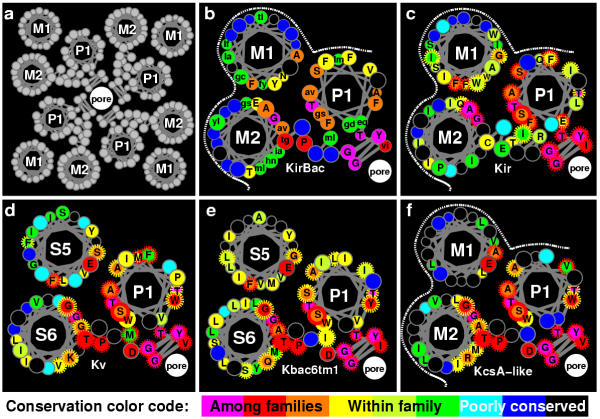Figure 4.

Helical wheel representation of the M1-P-M2 or S5-P-S6 region of different K+ families as viewed from the outside. (a) Representation of the positions of the helices in the tetrameric channel. (b-f) Representation for different families in which side chains (small circles) that are identical or conserved among all or most of the of the families are colored magenta, red or orange, those that well conserved within the family but not among most families are yellow to green, and those that are poorly conserved within the family are cyan to black. For (c-f) side chains that are identical or very similar to conserved residues of the KirBac's are encircled by red or orange dashed lines. In (b) side chains were colored by how many residue types occurred at that position in the alignment for the five KirBac's : 1 = yellow, 2 = green, 3 = blue, 4 or 5 = black. In (c-f) side chain colors were determined by the percentage of conservation at that position calculated by the GCG editor [8] using the Blossum 55 substitution matrix [22] with a cutoff value of 2. Higher levels are colored yellow to green, lower values cyan to black. The more conserved side chains were labeled with the consensus residue determined by the GCG editor. The white dashed line represents the surface that is exposed to the lipid alkyl chains. The representation is somewhat misleading because the axes of the helices in the KcsA crystal structure are not exactly orthogonal to the plane of the membrane. The following groups of residues were considered as conservative substitutions: (K, R, H), (E, Q, D, N), (G, A, S, T, C), (V, I, L, M), and (F, Y, W).
